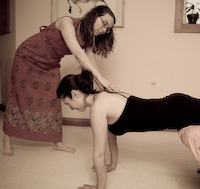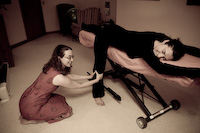Advanced Work
Rolfers generally suggest taking six months to a year after completing an initial series before receiving additional structural bodywork - however, that's not a hard rule and I encourage you to follow what seems best to you. At some point, you may feel a need for a refresher session, or "tune-up" to remind your body of the changes that were made in the original series. We recommend one or two sessions per year after the first sessions to maintain the benefits of the original ten, as well as address any new problems early, before they get worse.
Somewhere between one and five years after an initial series, many clients return for a shorter (four to six sessions) advanced series, customized for your body and your goals. This can include sport-specific fine-tuning for runners, yoga practitioners, dancers, and so forth. Advanced sessions concentrate on ways of deepening the work completed in the basic series by using additional approaches such as movement and joint articular mechanics. Often areas that were painful and frozen during the first sessions are found to be pliable and free during the advanced work.
Asymmetrical Patterns in the Body
I have had specialized advanced training on asymmetrical body patterns, taught by leading instructors from the Rolf Institute. This work addresses pelvic asymmetries, shoulder girdle asymmetries, counter-rotations in the arms and legs, and compensations in the spine and neck.
This approach has revolutionized my practice. With the ability to assess and treat specific asymmetrical body patterns, my work is more effective. The pelvis is the base of support for the entire spine and torso. Consequently, detailed specific pelvic work is essential for achieving whole-body results. Most people have some degree of pelvic asymmetry due to old injuries and lopsided activities such as driving and sports. These "functional" asymmetries may not even cause pain, but they do cause limitations to your range of motion and other long-term problems.
When should your pattern be checked? After a fall from your bicycle or a slip on the ice, or anytime you have pain in your sacrum, hip, knee, or ankle. It's ideal to correct any assymetries as soon as possible to prevent further compensations throughout the body.
If you are concerned about your body patterns and would like to be checked, or if you simply are interested in further optimizing your health, you might consider advanced Rolfing.
Check out the Short Movement Classes which are open to the public regardless of whether or not you have had the Rolfing series.

